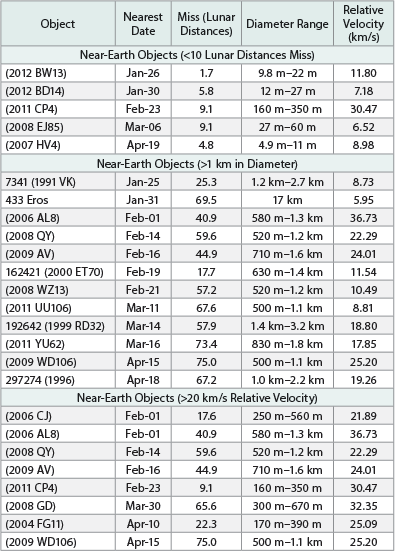Web page: Build a Solar Cooker
Video: Energy: Solar Cooking, National Geographic
Web page: Parabola, Math Is Fun
Web site: Near-Earth Object Program, NASA
Science is all about inquiry—questioning phenomena and searching for answers. Over thousands of years, scientists have developed a general method for seeking answers.
Like all forms of inquiry, the scientific method is not a hard-and-fast set of steps that always occur in the same way and in the same order. Still, the method has a series of widely agreed upon steps, shown to the left of the outline below. The standard lab report uses a structure that follows the scientific method.

Ask a question or identify a problem.
Lab Report
Problem: (or Objective or Question)
A brief description of the problem, objective, or question

Form a hypothesis about the issue.
Hypothesis:
An assumption or prediction about the problem, objective, or question

Design an experiment to test the hypothesis.
Experiment Design: (or Procedure)
An explanation of the materials and methods used to test the hypothesis
Results: (or Data)

Conduct the experiment and gather data.
A list of the data gathered—often arranged in tables, graphs, or charts
Analysis: (or Discussion)

Review the data and experiment and draw conclusions.
A discussion of the data, what it means, and any questions or concerns
Conclusion:
A verdict for the hypothesis and any further experimentation that should occur

Present your findings in a lab report or paper.
Works Cited:
A bibliography of the sources of information used in the report
Your Turn Reflect on a science experiment that you have conducted. What was the main question or problem? What did you discover? How is science a specialized form of inquiry?
The scientific method and the lab-report form give you the basic structure for designing an experiment:
| The sun is so blazing hot today. I feel like I’m frying. What would it take to make a solar stove that could actually cook food? |
| Hypothesis: Using tin foil on a parabolic curve, I could concentrate enough sunlight to heat a hot dog to 190 degrees F. |
| Variables: Size of reflector, cooking temperature, cooking time Test for reflector size: Use 1-foot, 1½-foot and 2-foot reflectors. Test for temperature: Use meat thermometers. Test for cooking time: Use watch with second hand. |
| Variables: Ambient temperature, wind Controls: Require 80–85 degrees F ambient temperature, < 5 m.p.h. wind |
| Design: I will create a set of solar cookers using parabolic curves covered in tin foil. Each curve will be 6 inches wide, but I will test these at 1-foot, 1½-foot, and 2-foot lengths. For each reflector, I will test the time it takes for a hot dog to reach 190 degrees F. |
Your Turn Think of interesting phenomena in the world around you: the movement of shadows, the formation of snow drifts, the erosion of soil, or some other pattern. Then follow steps 1 to 5 above to design your own experiment. If your instructor approves your design, carry out the experiment and report the results.
The experiment design on the previous page uses a deductive pattern of thinking. It begins with a general question and works toward specific observations. Here’s a lab report that also uses deductive reasoning:
Osmosis in Chicken Eggs
Abstract:
This lab experiment tests osmosis in chicken eggs, specifically focusing on the effect of water concentration inside and outside the eggs.
Problem:
Deduction begins with a general observation, a problem, and a hypothesis.
How does water content inside and outside an egg affect osmosis?
Hypothesis:
Higher water concentration inside an egg will cause osmosis outward, and higher concentration outside will cause osmosis inward.
Experiment Design:
An experimental design allows scientists to test the hypothesis through a step-by-step procedure.
Results:
Specific results appear in a table.
Egg | Width Before | Width After | Length Before | Length After | Mass Before | Mass After |
A. Water | 41 mm | 43 mm | 54 mm | 57 mm | 52 g | 62 g |
B. Salt water | 44 mm | 41 mm | 56 mm | 53 mm | 54 g | 49 g |
C. Isopropyl alcohol | 46 mm | 42 mm | 57 mm | 55 mm | 55 g | 45 g |
D. Corn syrup | 42 mm | 38 mm | 55 mm | 52 mm | 52 g | 43 g |
Analysis: (or Discussion)
Analysis reveals patterns in the data.
The egg in distilled water gained width, height, and mass. All of the other eggs lost in each category. The solutions with the lowest amount of water show the greatest reduction in the size and mass of the egg.
Conclusion:
The conclusion applies the general hypothesis to the specific data.
Water moved from greater concentrations to lesser concentrations, thus swelling or dehydrating the egg.
Your Turn Discuss with a partner how lab reports exhibit a deductive structure (see also page 97).
Scientists also work inductively, beginning with a mountain of data and sifting through it to discover patterns and processes. The table below from NASA shows near-Earth objects, indicating date, distance from Earth, size, and relative velocity.
Inductive reasoning begins with specific data, such as this information about near-Earth objects.
Inductive reasoning looks for patterns: objects that are close, those that are large, and those that are fast.
Inductive reasoning makes connections: Some objects appear in two categories.
General conclusions result: Objects sharing two or more of these traits are concerning due to chance of hitting Earth and energy imparted by hitting.
Near-Earth Objects, Jan 25–April 19, 2012 
Your Turn Investigate the chart above. Do you notice any other interesting patterns? Can you draw any conclusions from what you see?
Web page: Build a Solar Cooker
Video: Energy: Solar Cooking, National Geographic
Web page: Parabola, Math Is Fun
Web site: Near-Earth Object Program, NASA
© 2014 Thoughtful Learning
